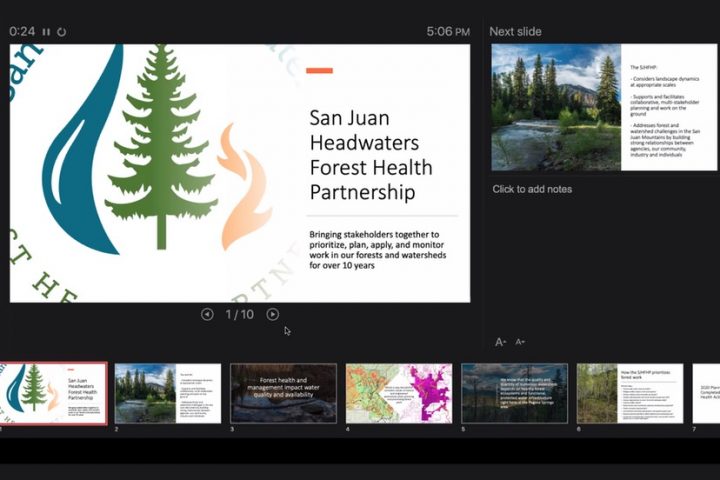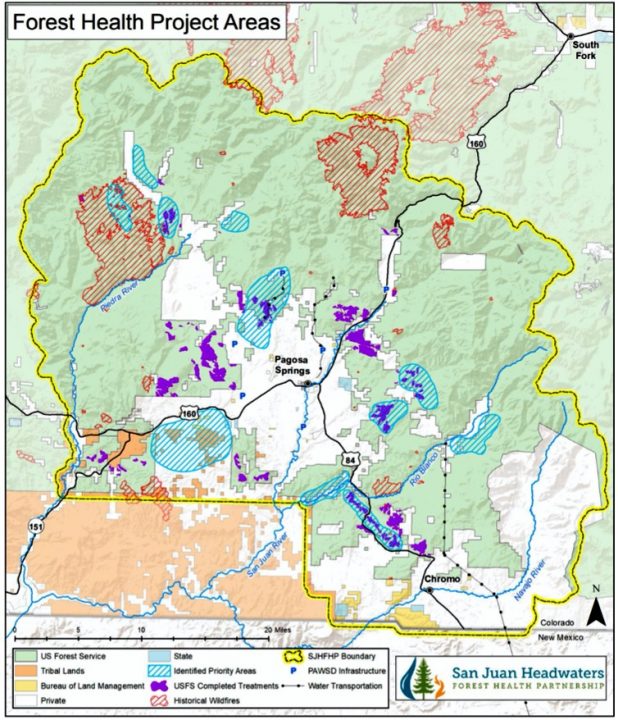The San Juan Water Conservancy District held a ZOOM meeting last night, and much of the discussion concerned the draft 2021 budget. How will the appointed, volunteer board spend taxpayer-provided revenues in the coming year to affect, in whatever ways possible, the community’s secure access to water?
Disclosure: I currently serve on the San Juan Water Conservancy District board, but this editorial does not necessarily reflect the opinions of the SJWCD board as a whole or of any other SJWCD board members.
Most — but not all — of our businesses and residents in Archuleta contribute annually to the operations of the District. Calculated on a per capita basis, each man, woman and child will contribute, next year, about $6.50 towards the District’s budget, with the largest relative contributions coming from business owners and from owners of vacant, non-agricultural real estate.
SJWCD’s draft budget will be available for public inspection by October 15, as required by Colorado law.
In its draft budget, SJWCD plans to contribute about $2,500 to the San Juan Headwaters Forest Health Partnership. Calculated on a per capita basis, that comes to a donation of about 18 cents per Archuleta County resident.
The first item of business at last night’s SJWCD meeting included a presentation by Dana Hayward, Partnership Coordinator with the San Juan Headwaters Forest Health Partnership.
Ms. Hayward’s first Powerpoint slide noted that the Partnership has spent the past 10 years working with various “stakeholders” in Durango and Pagosa Springs and the surrounding area, on the problem of “forest health”. The partnership is supported by various government and corporate entities, including La Plata Electric Association (LPEA), Pagosa Area Water and Sanitation District (PAWSD), US Forest Service, Colorado State University (CSU) and San Juan Water Conservancy District (SJWCD).
Although she didn’t mention it in during the presentation, the Forest Health Partnership originally formed back in around 2001 under the name “The Upper San Juan Mixed Conifer Working Group”. To the average man or woman on the street, the name “Mixed Conifer Working Group” probably suggests a bunch of forestry professionals sitting in a sterile room under fluorescent lights, discussing tree species… and likely doesn’t generate a lot of sympathetic feelings, in terms of making donations of taxpayer funding.
In around 2010, the group apparently changed its name to “San Juan Headwaters Forest Health Partnership.”
We generally perceive “Health” as a good thing, and we probably also have good feelings about “Partnerships.” So the name change was probably, overall, a positive move. But the basic goal has remained the same, as I understand it: to identify and acquire funding that can be used to prevent catastrophic forest fires in the Pagosa Springs area.
Here’s a map from the Forest Health Partnership’s 2018 annual report.
The red cross-hatching indicates recent large forest fires. We note that these fires have occurred within the National Forest — the green areas of the map — and not within the white area of the map, which would be the community’s privately owned land. The overall thought is that better “management” of forests — that is to say, the removal of smaller trees and scrubs — can possibly help prevent catastrophic wildfires.
We also note that the “Identified Priority Areas”, shown by the light blue cross-hatching, include Aspen Springs, the Upper and Lower Blanco River and the area northeast of Lake Hatcher.
Major forest fires are always catastrophic in terms of air quality and threats to forest-dwelling wildlife and vegetation, but much has been made, recently, of the negative impacts to water quality following major fires, as burnt vegetation and soil flows into rivers and streams. This concern about water quality has led government entities like PAWSD and SJWCD to get involved (in perhaps a minor way) in forest mitigation efforts.
Protecting the headwaters, of course, can be considered a benefit to all the water users downstream from Pagosa. In reality, however, any serious water pollution in the Piedra or San Juan Rivers, from a wildfire in the San Juan Mountains, would probably be relatively harmless to downstream water users, once the flow got diluted in the 1.7 million acre-foot Navajo Reservoir, which begins in the southwest corner of Archuleta County.

But this is all about protecting water resources from pollution.
Let’s get back to the main topic of this editorial series. Taxpayer funding paid out to property owners who might decide not to use Colorado water — which those property owners access free-of-charge under Colorado water law — because they can make more money selling it to the taxpayers.
Let’s imagine that the State of Colorado, in a rather desperate effort to increase the storage downstream in Lake Powell, developed a plan to pay farmers a certain amount per acre-foot to stop irrigating their farms, and to allow the water they would normally use for irrigation to remain in the Colorado River (or the San Juan River). This is not a terribly big leap of the imagination, because Colorado water experts and attorneys and consultants are, right now, in the midst of developing a program called “demand management” aimed at sending more water to Lake Powell.
Some questions come to mind.
Would a group of New York investors think twice about collecting “demand management” payments? Shutting down the numerous agricultural operations they’d purchased over the past few years, and sitting back to collect money for water they are not using?
How would a agricultural Colorado community survive, when a significant portion of its surrounding local economy were shut down… and the money was flowing to New York investors?
One more question. Would the New York investors then claim that they were saving Colorado from a disaster?
From the Water Assets Management website:
Water investing combines competitive investment returns and free enterprise, with serving the common good and delivering measurable positive impact. Water investing is responsible investing. Delivering clean water and treating wastewater is essential to sustaining life and public health, while restoring rivers, coastal environments, and marine ecosystems.
WAM’s core belief is that scarce clean water is the resource defining this century, much like plentiful oil defined the last. WAM’s investment process is focused on fundamental analysis based on deep, proprietary water industry expertise and access to a wide range of industry operators, regulators, and policy experts…
Water investing has historically acted as an effective hedge against inflation with water pricing rising in excess of the rate of inflation… There is increasing competition among users of water (industrial, agricultural, residential and environmental) that require more efficient and flexible mechanisms to deliver and allocate water…
Lower Price Compared to Electricity, Gas, Cable, and Telecom: The comparably low price of water relative to value leaves ample room for price increases to cover full costs of operations, capital investment, and reliable supply…
I’m not sure what, exactly, they mean by “ample room for price increases.” We can easily guess, however.



